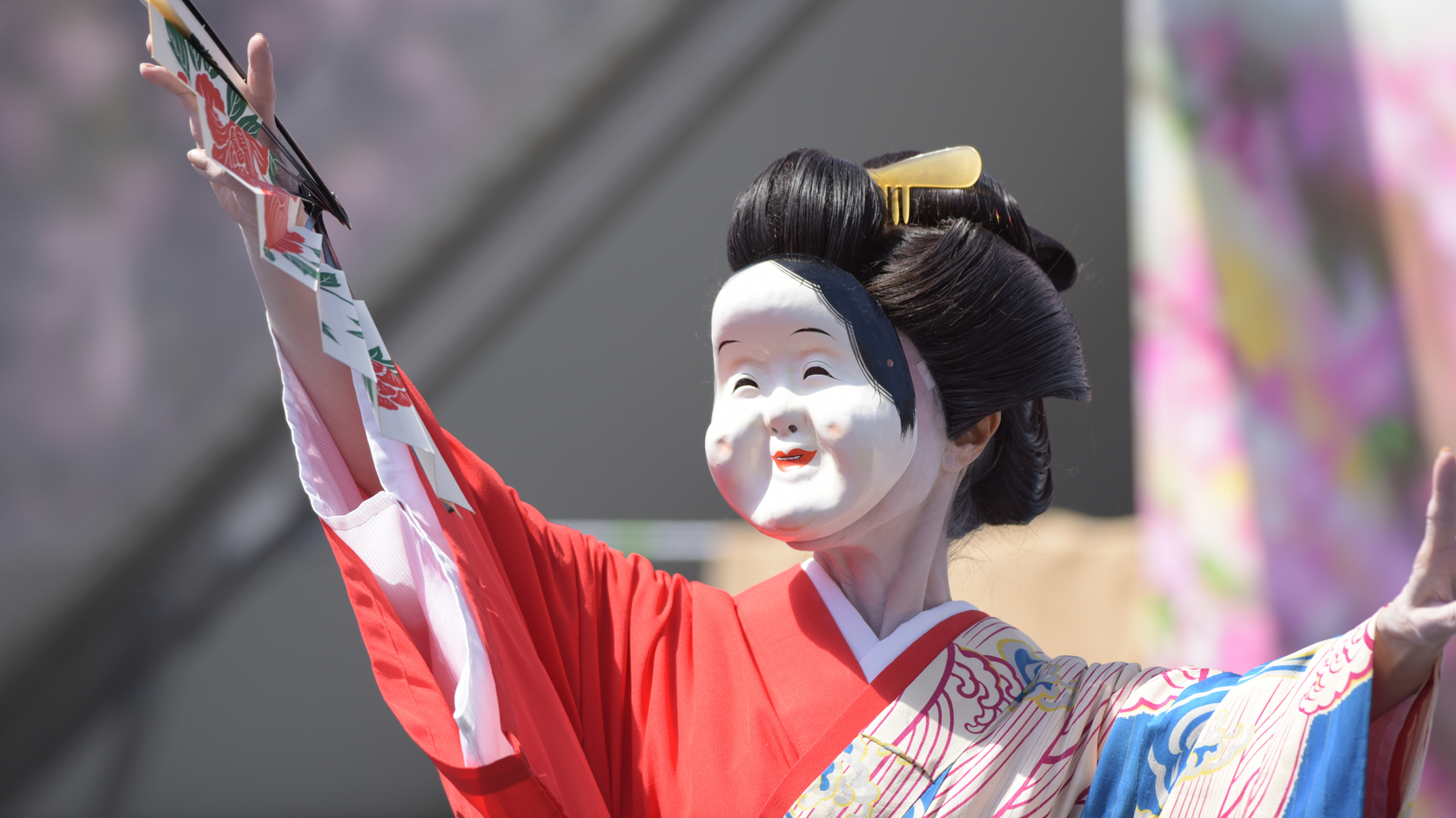
The Dark Stories Behind Japanese Festival Masks Tokyo Weekender
Japanese masks are used traditionally in theater, festivals or rituals. They are connected to folk myths and tails. Masks represent people, creatures, devil, ghosts, and animals.. and it consists of ritual dances in villages in a harvest festival. One of the dances is lion dance that represents mimic and movement of a lion in a lion costume.

Haganezuka Hotaru mask, anime cosplay mask, traditional japanese festival mask Hyottoko in 2020
Japanese mask festival. The little Goryo Shrine in Kamakura puts on a small but unique festival where the participants wear masks which are over two centuries old. The festival is held in honor of the enshrined spirit of Kamakura Kagemasa, a famed samurai warrior of the 11th Century popularly known as Gongoro. You will love this video on YouTube.

Traditional Japanese Masks and What They’re Used For
12 September 2022 Traditional Japanese masks are mostly decorative and are available for sale at shrine festivals and events. Others are worn during certain Shinto dances or by actors performing a role on the stage.

Traditional Japanese Masks and What They’re Used For
Traditional Japanese masks are either archetypes borrowed from myths and gods or representing emotions, and they have been used in Shinto shrine festivals, rituals, and traditional drama called Noh. Some of them are quite popular Japanese masks that you can still see today. History of Japanese Masks

The Kitsune Mask More Than Just A Theatrical Prop or Decorative Piece YABAI The Modern
Only Today, Enjoy Japanese Mask Up To 90% Off Your Purchase. Hurry & Shop Now. Don't swipe away. Massive discounts on our products here - up to 90% off!

Noh Mask Japanese Nogaku Hannia Dance Performances Party Halloween Carnival Decoration
Traveling mask vendors follow the Japanese festival circuit all over the country selling overpriced cheap plastic masks in the shape of popular cartoon characters and mythical creatures. These masks can be found at virtually every Japanese festival. They only fit the smallest of children so people typically wear them to the side or back of.
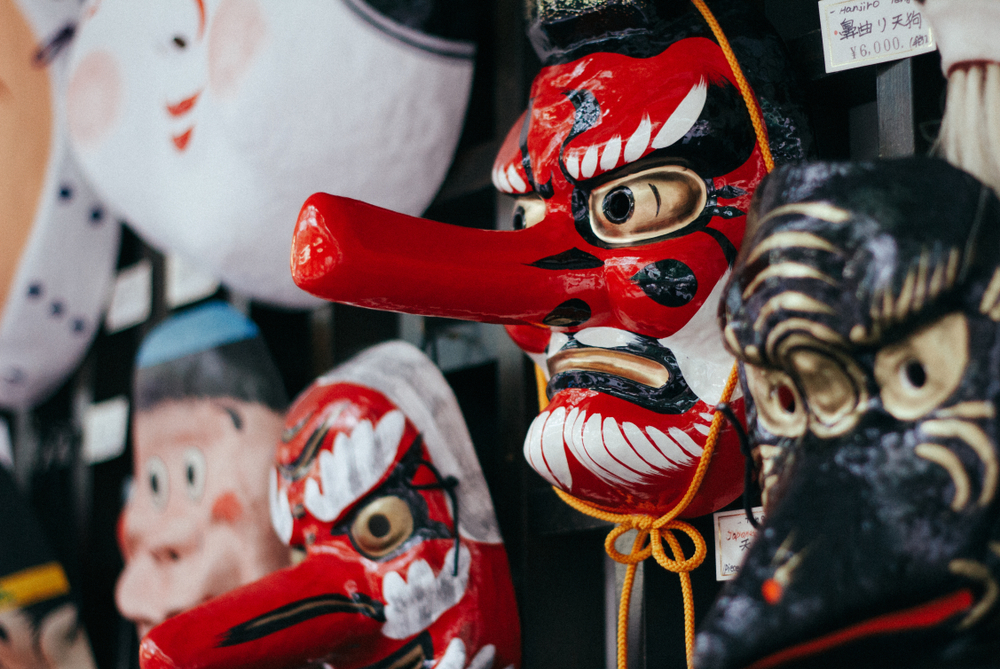
The Dark Stories Behind Japanese Festival Masks Tokyo Weekender
The Oni mask, derived from Japanese folklore, is renowned as the most iconic Japanese mask. It represents demon-like creatures and holds a significant place in Japanese culture. The Oni mask is renowned for its menacing expression. Sharp fangs and horns accentuate it. What Does the Oni Mask represent?

Various traditional Japanese masks Arts & Entertainment Stock Photos Creative Market
Japanese masks are an artform of unlimited variety. There are theater masks, tailored for each indivual character and mood; there are religious masks, the physical embodiment of spirits; and masks are also worn for festivals and celebrations, some peculiar to one small town, others in festivities across the country.
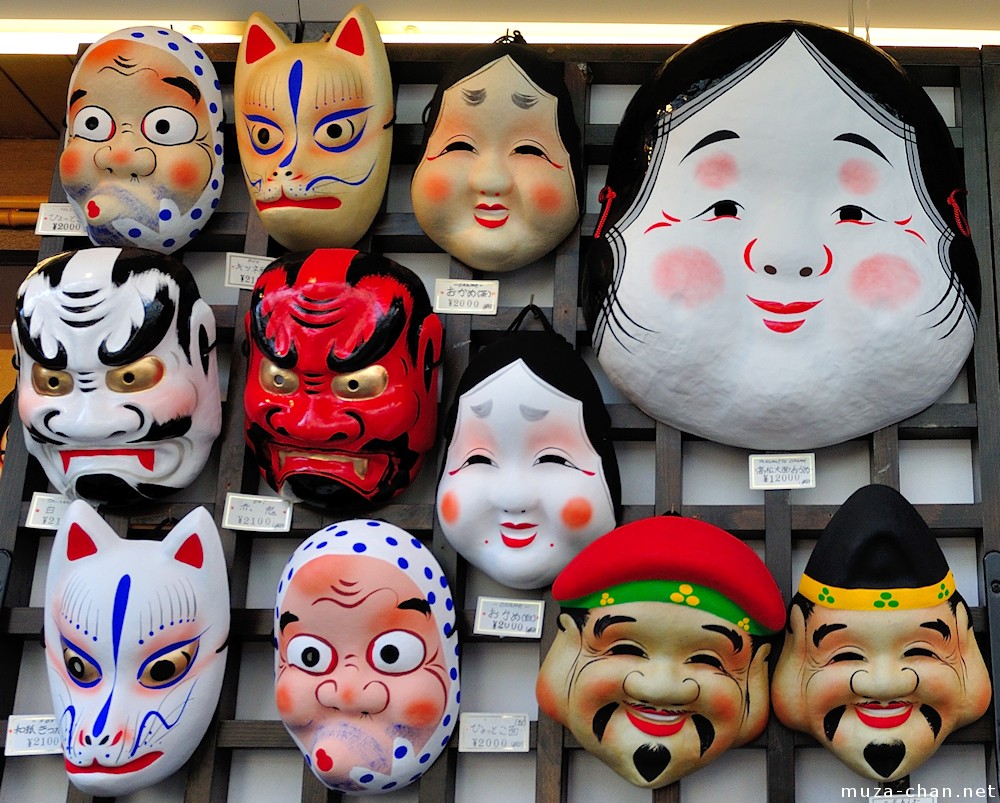
Japanese traditional mask, Hyottoko
Today, Japanese festival masks come in all sorts of varieties, including superheroes, cartoon characters, magical foxes etc. The more traditional ones can trace their origin to sacred court dances and performances but today they're mostly treated as silly-looking souvenirs.

Japanese mask, Japanese traditional, Japanese festival
Collection of Kabuki Masks (2015); Tranpan23, CC BY 2.0, via Wikimedia Commons Hannya Masks. Hannya masks are another form of traditional Japanese mask that primarily represents a serpent with horns and fangs or a female demon. The Hannya mask is one of the oldest and most well-known types of Japanese masks that featured in Kyogen and Noh theater productions.

Fox Festival Japanese festival, Kitsune mask, Japan culture
Japanese Festival Masks Other masks are traditionally used in local festivals or Shinto rituals. Oni (demon) masks, which have furrowed brows, short, spiky horns, and sharp fangs, are used during Setsubun, the day before the beginning of spring in Japan.

Japanese Noh Masks Set. TENGU & HANNYA.They have been believed that protect the house from
You will not likely see it during Japanese festivals or displayed in shops as such. Rather, you'll likely see them on ancient statues. These are just a select few of the unique and interesting traditional Japanese masks.

japanesefestivalmasks1 Japan in Norwich
The Japanese kitsune mask is worn by the participants of the festival to celebrate the Japanese legend about the marriage of foxes! The traditional kitsune mask is so popular in Japan that it can also be seen in the most read manga like Naruto.
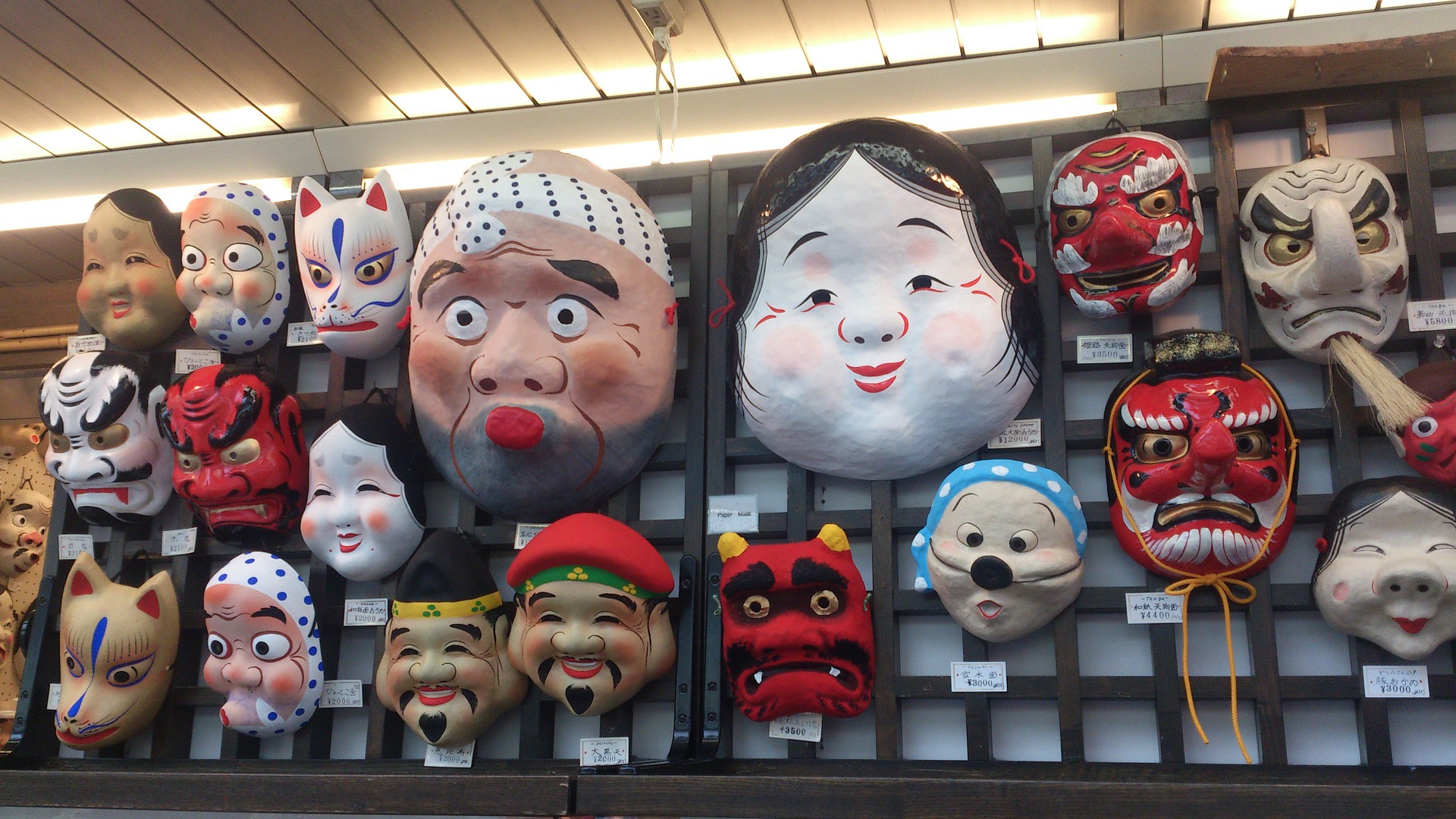
Traditional Japanese Masks Own a Piece of Japan's History FROM JAPAN Blog
The traditional Japanese masks occupy an important place in Japanese culture. In the Kabuki theater, they are used to embody characters, such as demons, or to translate expressions, such as anger. Each mask has its own meaning. Even nowadays, traditional masks are still used by theater actors or Shinto dancers.
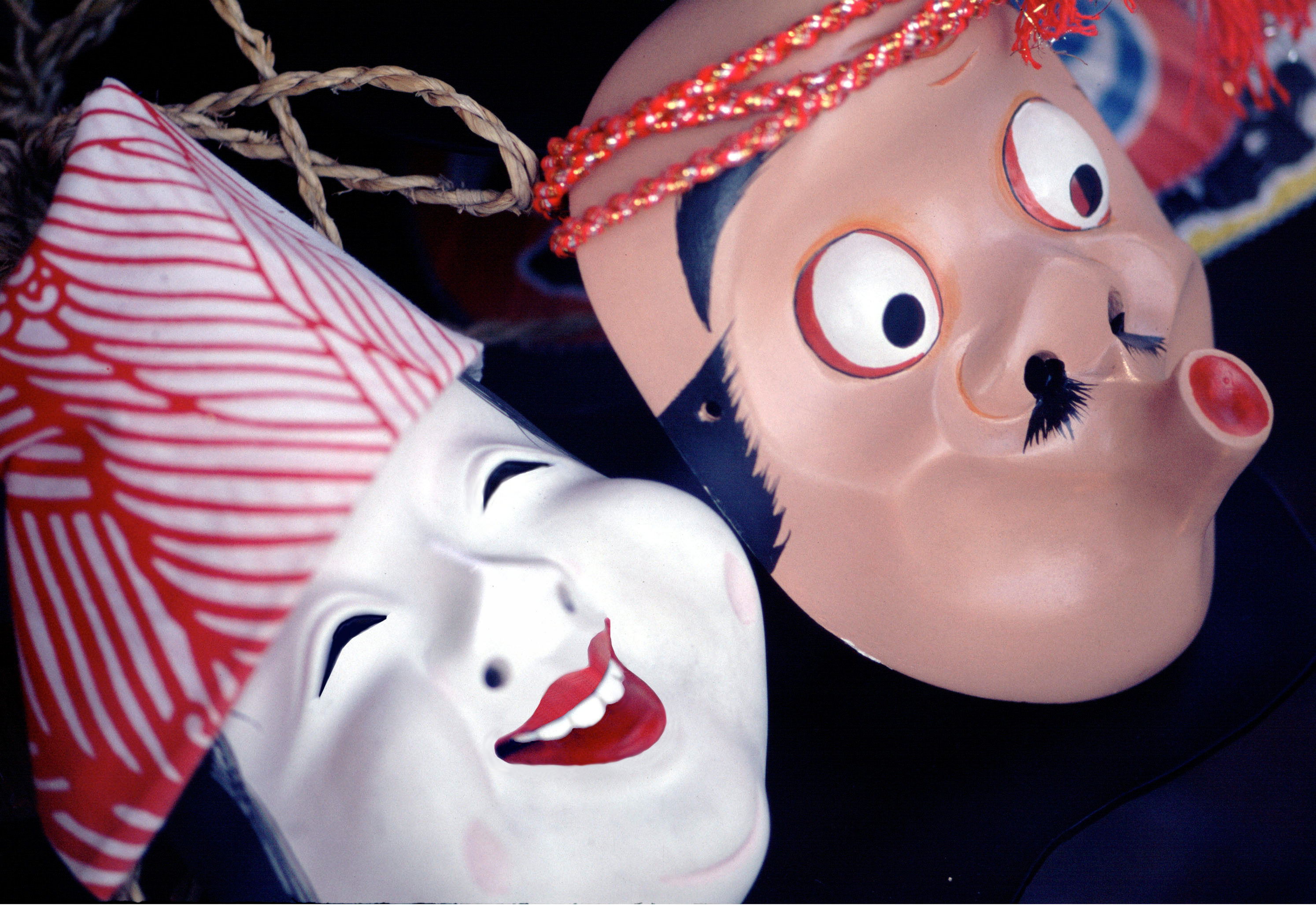
9 Traditional Japanese Masks and their Meanings
9 Kinds of Japanese Traditional Masks | POP JAPAN From the various kinds of masks used in theatre, to the modern fashionable black masks, behind them are marks of the rich history and culture of the nation.

YAHUIPEIUS Japanese Fox Mask Hand Painted Anime Fox Mask Halloween Cosplay Costume Accessories
Japanese masks are an integral part of Japanese culture, used for a variety of purposes from theatrical performances to traditional festivals and religious rituals. What are the reasons for wearing a Japanese mask? There are many reasons why people might wear "Japanese masks." For some, it is simply a matter of style or fashion.